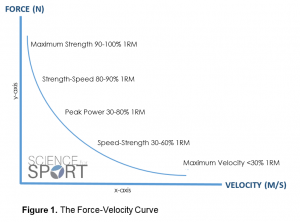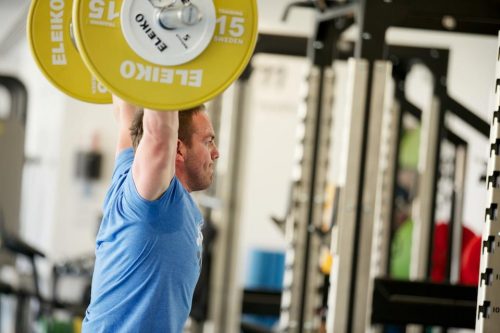I have talked a couple of times in past blogs about the Force Velocity Curve. Understanding the curve can give you a head start when planning your workouts and programs. Whether you are looking to improve speed, strength, size or all three, understanding is only the first step.If you want to go back a step, check out “Understanding The Force Velocity Curve”. Weightlifting is a great tool to improve multiple aspects of fitness, including size, strength and speed. Breaking down the Clean & Jerk and Snatch can be a good way to learn the movements. However, you can also use these derivatives to train different portions of the curve.
The Force Velocity Curve (a quick reminder)

Weightlifting Derivatives For Different Outcomes
Max Strength:
- Mid Thigh Pull
- CMJ Shrug
Strength Speed:
- Hang Clean / Snatch Pull
- Clean / Snatch Pull
Peak Power:
- Hang Power Clean / Snatch
- Power Clean / Snatch
Speed Strength:
- High Hang Power Clean / Snatch
Max Velocity:
- High Hang High Pull
- Jump Shrug
An Important Note
Yes, it IS load dependant. These are prescribed using common loadings used within these movements. For Example, mid thigh pulls and CMJ shrugs are usually performed at %s above clean or snatch 1RM. Additionally, Power and hang variants are most commonly performed at loads below 1RM of the full lift. You may find that you need to spend a bit more time practicing before loading up some of the heavier movements. However, if you are proficient within the lifts, these provide guide lines as to why you might want to use them. They are not set in stone and are only suggestions!
Whether it you’re a beginner or have a good level of knowledge of weightlifting and want to learn more, our Expert Personal Trainers in Camberley, Surrey, are here to help. General fitness and sports performance can benefit equally from olympic lifting, so please don’t hesitate to get in touch.
